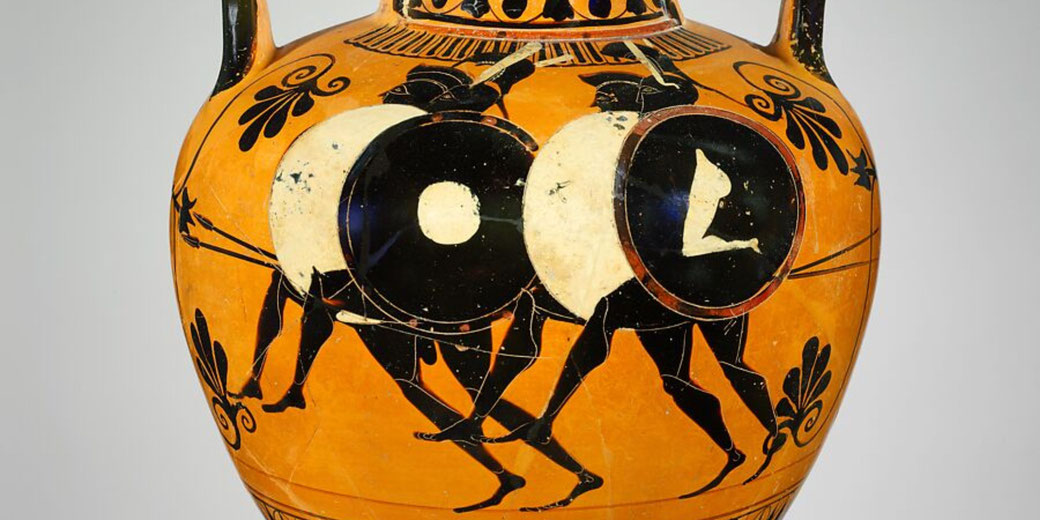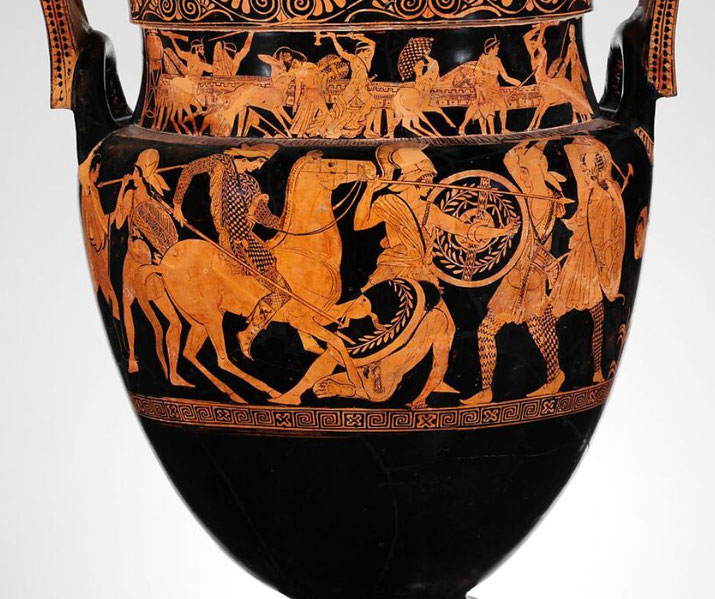What were the Greco-Persian Wars?

The ancient Greeks were a particularly war-like people. Since Greece was made up of individual city-states, they were often at war with one another.
As a result, all Greek cities had developed a system for training their citizens in preparation for yearly warfare.
One of the most famous wars that the Greeks ever fought was against a foreign invader: a superpower from Mesopotamia called the Persian Empire.
The Persians attempted to invade Greece on two separate occasions and the various Greek cities had to learn how to put their differences aside and discover how to work together to deal with this threat.
Hoplites
While Greek armies did have cavalry and archers, they most commonly had just one type of soldier.
It was a spearman who was equipped and trained in a way that could work well with the other spearmen on the battlefield.
These spearmen were called 'hoplites'.

Each hoplite carried a spear that they used to stab their enemies. Also, they carried a thick, round shield and a breastplate.
Hoplites were trained to work together as a team, standing in straight lines to create a square formation.
They would march in time and, when they engaged the enemy line, they were taught to push together, similar to a rugby scrum.
When working in coordination, hoplites were very hard to defeat in battle. This fighting formation is called a 'phalanx'.
Great battles
The Persians first attempted to invade Greece in 490 BC. They landed a large army using ships near Athens at a place called Marathon.
The Athenians and some of their allies used clever hoplite tactics to defeat the Persians, even though the invaders had a much larger army than their own.
Next, the Persians tried to invade Greece by marching down from the north over land.
This time, the Spartans and their allies forced the invaders to halt their advance by holding a narrow pass between two mountains at Thermopylae.
Even though the Spartans eventually lost, it took the Persians three days to defeat them and lost many more soldiers than their enemies.
However, the extra time allowed the Athenians to escape to safety.
Triremes
While hoplite phalanxes were the core of the Greek land armies, they also had a special kind of ship for fighting at sea.
Greek warships were called 'triremes', and they could be moved using oars or sails.
This made it easy for them to make quick movements in battle. Each trireme had a metal point at the front called a 'ram', which was used to crash into the side of enemy ships in order to sink them.
Following the Battle of Thermopylae, the Persians marched on the city of Athens.
However, the invaders found that the Athenians had deserted their city-state and had moved all of their people to the nearby island of Salamis.
This island was protected by a fleet of triremes. The Persians sent in their own fleet of ships to destroy them, but the Athenians won a surprise naval victory.
Within a year, the Persians gave up on their plans to conquer Greece and returned home.
The Greeks had successfully fought together to save their region from the Persians.
However, it didn't take long for the Greeks to return to fighting themselves, and within 50 years, all of the Greek world would be at war with each other.
They were split into two sides and the war would last almost 30 years. It was known as the Peloponnesian War.
What do you need help with?
Download ready-to-use digital learning resources
Copyright © History Skills 2014-2025.
Contact via email
With the exception of links to external sites, some historical sources and extracts from specific publications, all content on this website is copyrighted by History Skills. This content may not be copied, republished or redistributed without written permission from the website creator. Please use the Contact page to obtain relevant permission.





